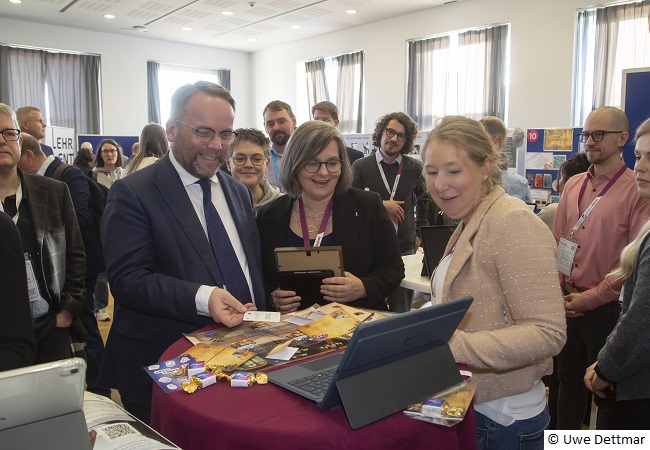After a five-year break, the large LHC accelerator at the CERN international research institute has once again brought lead ions to collision. During the process, the colliding matter dissolves into its components for an extremely short time, reaching a state like the one that prevailed in the universe a few millionths of a second after the Big Bang. The particle tracks of these collisions are recorded by the house-sized ALICE detector, which Goethe University researchers helped upgrade. Already during the first month of the new data collection period, a new record was set: 20 times more collision events were registered than in the data-taking periods of previous years combined.

On September 26, 2023, the accelerator team at the CERN European Council for Nuclear Research in Geneva declared stable lead-beam conditions, ushering in the first data-taking campaign of lead-ion collisions in five years. From then until the late evening of October 29, the accelerator produced lead-ion collisions at the world’s highest-ever collision energy of 5.36 terra electron volts per colliding nuclear particle (nucleon-nucleon collision). In addition to the collision energy, the collision rates also increased significantly compared to the data taking periods of previous years. The ALICE detector, specialized in recording lead atomic nucleus collisions, recorded 20 times more events than in the previous four data-taking periods combined – each of which lasted about one month, and the first of which dates back to 2010.
This is important because of the tremendous number of particles that are created and decay in a very short timeframe during the collisions. Recording the tracks of these particles allows conclusions to be drawn about exactly what happens at the moment of collision and shortly thereafter: The particles dissolve into their elementary components – quarks and gluons – and form a kind of „matter soup“, a so-called quark-gluon plasma. Immediately afterwards, new, very unstable particles form again, which finally transform into stable particles in complex decay chains. In this way, researchers in the ALICE experiment are studying the properties of matter as it existed shortly after the Big Bang.
Research groups from Goethe University Frankfurt are part of the experiments: The new record was first made possible because the world’s most powerful particle accelerator, the Large Hadron Collider (LHC), was upgraded during the four-year reconstruction phase from 2018 to 2022. The upgrades of the ALICE detector during the same timeframe enable it to record the traces of the LHC’s higher collision rates.
To carry out these upgrades, it was necessary to replace the readout detectors of the experiment’s central detector, the so-called Time Projection Chamber (TPC). Professor Harald Appelshäuser from Goethe University’s Institute for Nuclear Physics Frankfurt (IKF) serves as project lead for this 10-year undertaking.
The enormous amount of data generated during the measurements – which reaches the range of terabytes per second for the TPC alone – constitutes a major challenge. To be able to sufficiently reduce the amount of data stored, this data stream must be processed in real time, using effective pattern recognition methods. The Event Processing Nodes (EPN) computing cluster was set up specifically for this experiment. Based on both conventional computing cores (CPUs) and special graphics processors, the EPN project is led by Volker Lindenstruth, Professor for High-Performance Computer Architecture at Goethe University and Fellow at the Frankfurt Institute for Advanced Studies (FIAS).
The measurements at higher collision rates are a major success for CERN’s heavy ion program. Prof. Appelshäuser: „It’s finally happening! We have been working towards this for 10 years, and are looking forward to evaluating the data we have now obtained. I would especially like to thank Germany’s Federal Ministry of Education and Research for its long-term funding, not least since the only way for research projects of this dimension to be successful is by having such a reliable partner on board.“
Background
News release: ALICE experiment at CERN starts test operation with lead ions (2022)
About the ALICE experiment









